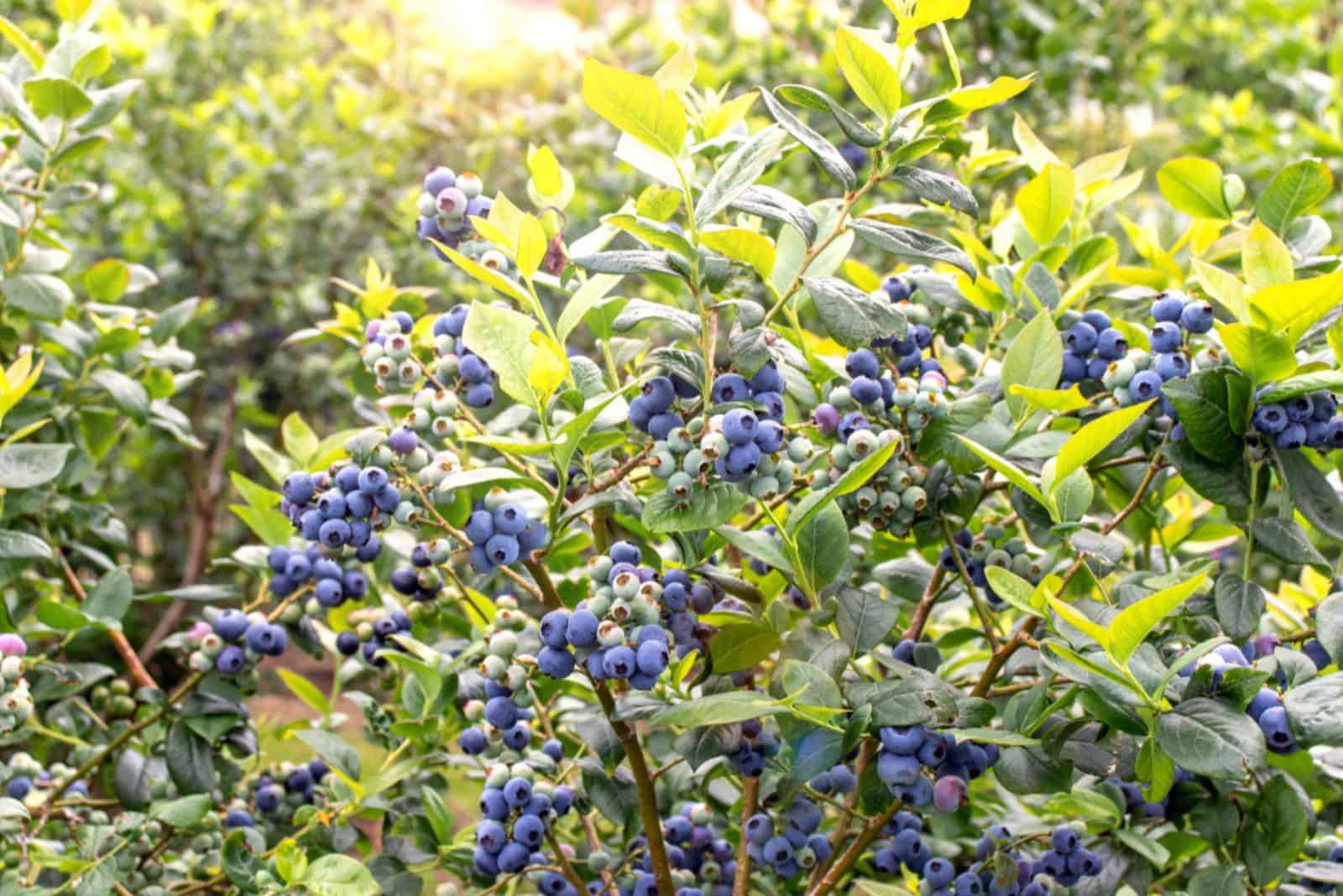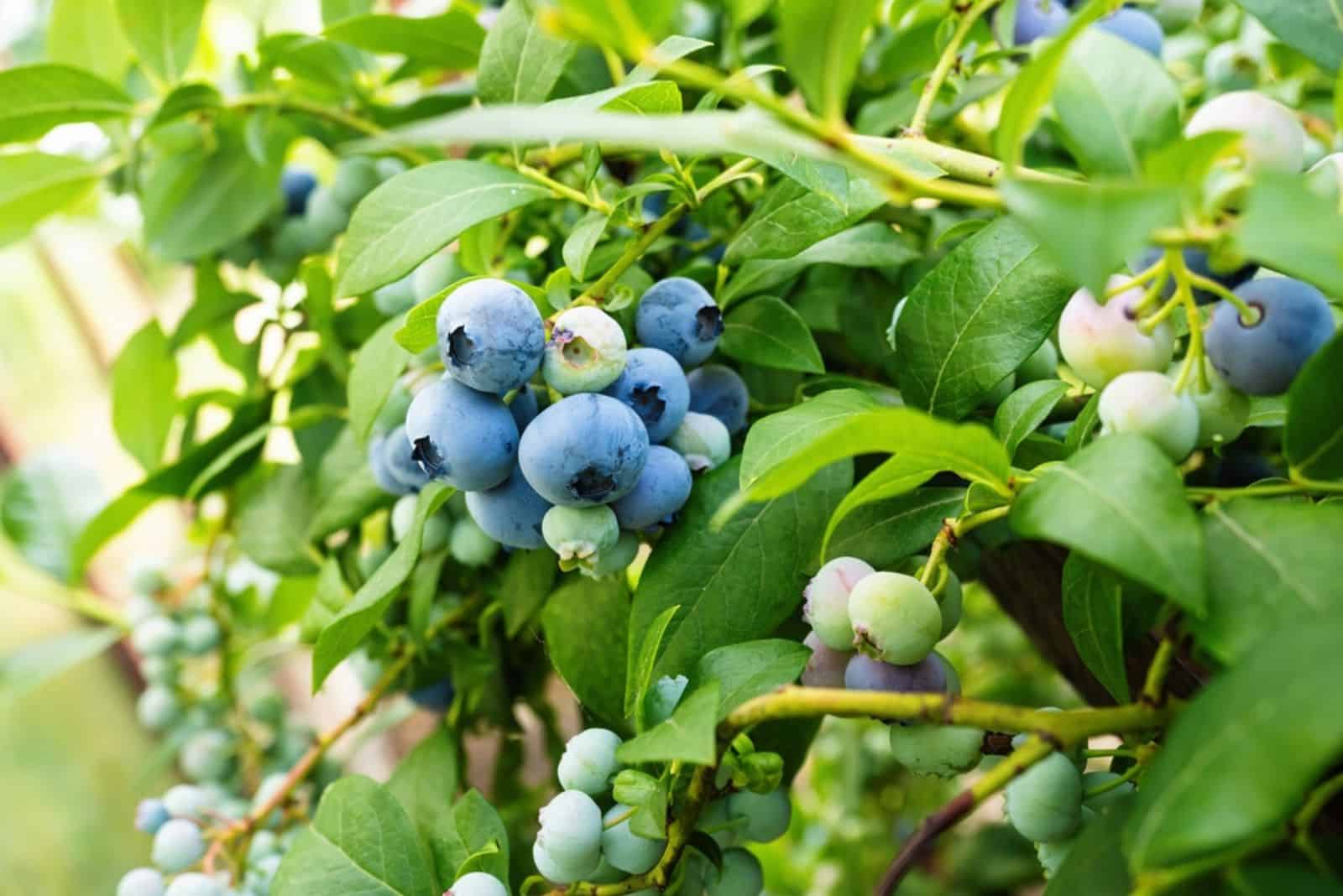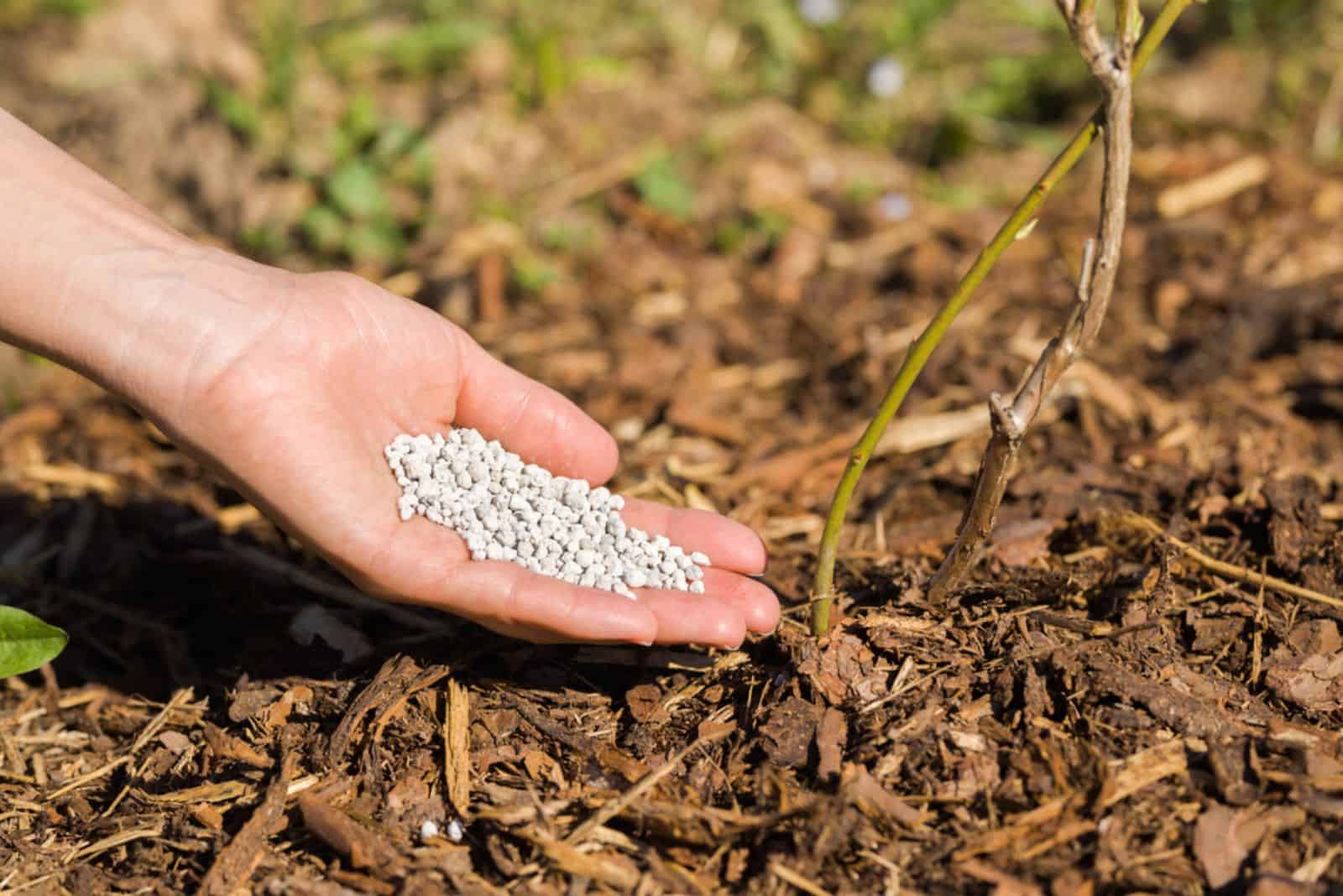Positive Bloom is an Amazon Associate and we earn from qualifying purchases through these links at no extra cost to you.
If you’re afraid of a poor blueberry yield this year, I know exactly how you feel. The easiest way to avoid this and get a bountiful harvest is by fertilizing your blueberries.
Choosing the right type of fertilizer can be challenging, but don’t worry, I’ve got you covered!
We’ll discover the secret of the best type of fertilizer for blueberries, and look at when and how to apply it. With this guide, you’ll be able to get a great blueberry yield whether you’re an experienced gardener or just starting out.
The Best Fertilizer For Blueberry Bushes
What requirements must fertilizer for blueberries meet? First, it needs to contain macronutrients, i.e., nitrogen for leaf growth and vigor, phosphorus for roots, flowers, and fruit, and potassium for fruit ripening.
Second, a fertilizer for blueberries must contain micronutrients such as manganese, zinc, and iron.
Your blueberries can’t develop properly or produce any fruit if they lack these nutrients.
The third requirement is acidity. This is one of the most important factors in blueberry production. These are acid-loving plants, so a pH range from 4.5 to 5.5 will make them happy and healthy.
Fertilizers rich in sulfur-coated urea and ammonium nitrate/sulfate are perfect for blueberries because they’ll make the soil more acidic.
There are a few excellent options for fertilizer with all these ingredients, and below you’ll see my top picks.
4 Great Options For Blueberry Fertilizer
Here are my recommendations for blueberry fertilizer.
1. Down to Earth All Natural Acid Mix Fertilizer: This high-quality fertilizer is also suitable for acid-loving houseplants and some veggies.
2. Scotts Company Miracle-Gro Acid-Loving Plant Food: I feed my Rhododendrons and blueberries with this fertilizer and it works perfectly.
3. FoxFarm Happy Frog Acid Loving Plants: This is a slow-release fertilizer type with all the nutrients blueberries need. I highly recommend it to beginner fertilizer users.
4. Dr. Earth Organic & Natural MINI Acid Lover: If you don’t have a lot of plants to feed, this mini package of fertilizer for acid-loving plants is a great option.
High Acidity = High Yield
Since you are devoting your time to feeding your blueberries, why not take it up a notch? Growing blueberries should always start with choosing the best varieties and testing the soil pH.
We can’t know if our soil is acidic enough unless we test it. Simply take a pH soil test kit, collect the samples, and put them in the tube. After you add the solution to the tube, shake everything well, wait a few minutes until the color on the strips appears, and read the results.
If acidity isn’t in the recommended range, there are some great ways to increase it. One of the most common and effective ways to raise acidity is by using elemental sulfur.
There are other soil acidifiers on the market, so choose the one that suits you best in terms of price and quantity.
The story doesn’t end here. You can also add a layer of worm castings because they’ll improve soil quality, repel pests, and act as fertilizer.
You can enhance root development by inoculating your blueberries with mycorrhizae. They’ll help blueberry bushes in water, with nutrient absorption, and also protect them from drought.
When To Fertilize?
Now that you know the best fertilizer for blueberries and how to prepare the soil, it’s time to learn the best time to apply fertilizer.
Always feed your blueberry bushes in early spring! They’ll start generating buds and the leaves are about to be fully developed.
This fertilizing schedule will give your berries enough time to uptake all the nutrients they require and prepare for fruit production.
If you have juvenile blueberries, you can add more food after a month and a half for the best results. On the other hand, if your blueberries are a few years old, then fertilizing once a year will suffice.
Step-by-step Guide For Fertilizer Application
Now that you know when to fertilize blueberry bushes, which fertilizer to use, and how to prepare the soil, it’s time to apply it.
You need the fertilizer itself and a tool for raking; if your blueberries are planted in-ground, a garden rake will do the job. If you grow your blueberries in containers, you’ll need a mini rake.
Here are 5 easy steps for applying fertilizer to blueberry bushes:
1. The first thing you need to do for both in-ground and container-grown blueberries is remove the mulch. Be very careful not to damage the root system when removing the mulch around blueberries planted in the ground.
When removing the mulch from container-grown blueberries, you can use a little force. Don’t be too aggressive and risk disturbing the roots. Check if your blueberry roots have enough space to spread and if there’s a need for a bigger container and repotting.
2. Prepare fertilizer: Dilute it by following the instructions written on the label. This is an essential step because fertilizer can burn the roots if left at full strength.
3. Apply fertilizer around the base of your blueberry plant. Never apply fertilizer directly on the plant because it can quickly damage it.
4. Add worm castings or acidifiers: If you need to boost acidity levels in the soil, now is the right time. If your blueberries grow in containers, add more potting mix because they lose a fair amount of soil every time you water.
5. Water the soil to activate the fertilizer. If your area is expecting rain 1-2 days after you fertilize, don’t water and let nature do the work instead.
Finish With Mulch
Now you want to prevent everything from running off. The most effective technique is adding a layer of mulch to the soil.
There are 2 benefits of this technique; first, it will trap moisture and protect your blueberries from drought, and second, it will prevent weed growth.
I know that all this can seem like a lot of work, but trust me, it’s worth it! Grab your gardening gloves and boost the nutrient levels in the soil to get buckets of the most delicious blueberries you’ve ever tried!




